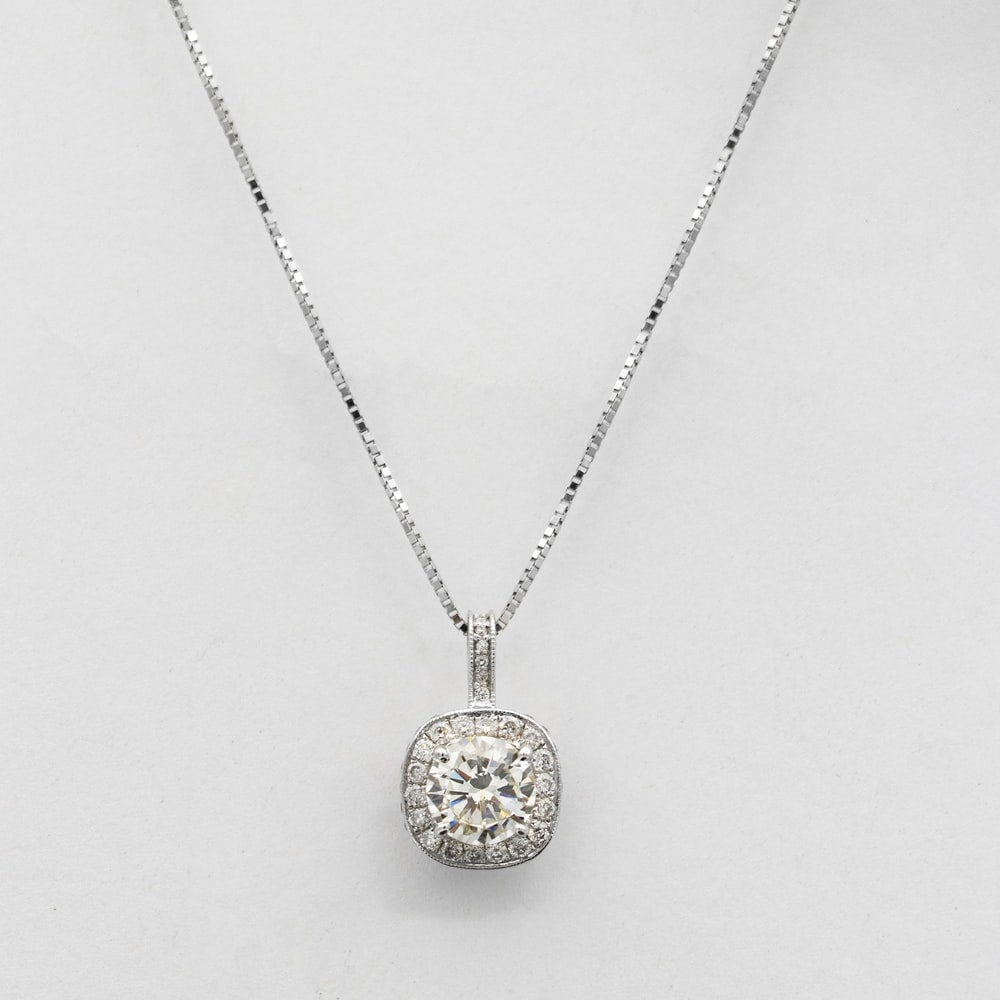
How Do You Pick a Diamond Pendant?
A diamond pendant adds versatile elegance to anyone's jewelry collection. Whether you're looking for a subtle, classic style you can wear every day or you want a sophisticated piece to upgrade your outfits for special occasions, you can count on Unique Gold & Diamonds to connect you with your dream piece of jewelry. You'll find a variety of options out there, so it's important to understand the characteristics of a diamond when you're looking for the right pendant for you.
The Four Cs
Image via Unsplash by sabrinnaringquist
When you're shopping for diamonds, you're likely to come across the phrase "the four Cs." This refers to a diamond's:
- Cut.
- Color.
- Clarity.
- Carat.
Often, these are diamond shoppers' first things to decide. Here's what to keep in mind:
Cut
If you are going for a colorless diamond, the cut you choose is one of the most important factors. A diamond's cut enhances its brilliance. An expertly cut stone has that beautiful sparkle you associate with diamonds. One that is not cut well, however, may look dull and lifeless.
Excellent and ideal cut stones are typically the best options. These cuts are created to exact proportions.
Color
You'll want to compare your diamond's color to the color of its setting to ensure your stone looks colorless in relation to how it is set. For example, a diamond set in white gold should be in the near-colorless range. If you go with a yellow or rose gold setting, you can go lower on the color scale as the diamond will still appear colorless against the color of the metal.
Clarity
You should check a diamond's clarity grade to make sure the clarity doesn't interfere with the stone's integrity or appearance. You'll want to look carefully at your diamond to be certain you can't see any flaws or impurities when it sits face up. While a diamond in a pendant is more visible to other people than a diamond in a ring, it's likely no one will get close enough to pay attention to the back of the stone.
Carat
The size you go with depends in large part on your budget and aesthetic preference. Generally, a 1-carat diamond is big enough that everyone can see your pendant, but it's not overly flashy. Just keep in mind that the bigger your diamond is, the more visible any defects in clarity and color will be. You should not compromise on quality to get a bigger size.
Pro tip: If you need to stick to a budget, you can go with a diamond that is slightly below a standard size. For example, with everything else equal, a .94-carat diamond will be less expensive than a 1-carat diamond — and you'll hardly be able to notice the difference in size.
Pendant Styles
Understanding the classic four Cs gives you an objective framework essential to making sure you get a quality diamond for your budget. However, those are not the only factors that go into choosing the perfect diamond pendant for you.
You'll also want to consider your own personal style and when you plan to wear your pendant to find the right one for your needs. Think about whether you want a classic style you can wear as part of your daily routine or if you're looking for something dressier for special occasions.
Thanks to its versatility, the diamond solitaire pendant consistently ranks at the top of diamond shoppers' lists as the most popular choice. A diamond solitaire pendant includes one single diamond that you wear at the end of a chain. Classic and simple, the solitaire pendant is a timeless option if you want something you can wear regularly. It's easy to dress up for a big event, and it looks just as elegant with jeans and a tee for an everyday outing. If you want something that's flashier, you might consider various shapes or multiple stones instead.
Diamond Shape
While a round brilliant diamond offers a classic shape, you'll find a variety of shapes to suit your unique personal style. Diamond shapes include:
- Asscher.
- Baguette.
- Cushion.
- Emerald.
- Heart.
- Lozenge.
- Marquise.
- Oval.
- Pear.
- Princess.
- Radiant.
- Round.
- Tapered baguette.
- Trilliant.
Pendant Setting
The setting you choose also plays a big role in the overall appearance of your jewelry piece.
Metal of the Setting
Most diamond pendants come with platinum or gold settings. You can wear these metals daily, as they don't tarnish.
Platinum is more expensive than gold. It is typically considered to be the most prestigious jewelry metal.
Gold can offer a more budget-friendly choice that still delivers timeless style. You can choose gold settings in either rose, white, or yellow colors.
Style of the Setting
You'll also find a variety of setting styles to choose from. Popular settings include:
- Bezel: A bezel setting will surround the whole diamond with metal. The advantage of a bezel setting is that it keeps the stone secure and safe. The disadvantage is that it may minimize the diamond's sparkle since you can only see the diamond from its face up.
- Halo: Surrounding your main diamond with a sparkling rim of diamond melees, the halo setting can enhance your center stone's brilliance while still keeping it secure.
- Prong: Prong settings typically include four or six prongs that hold a stone in place. Prong settings only minimally interfere with a diamond's light performance, allowing the diamond to interact with light around it from every angle. This setting enhances a diamond's brilliance and fire, allowing it to beautifully sparkle.
While you will want to make sure your setting holds the diamond securely in place, a pendant isn't exposed as much to wear and tear as a ring. That means you don't have to make setting durability as big of a consideration as you would with a diamond ring.
Whether you know exactly what you want in a diamond pendant or you're looking for an expert to guide you, Unique Gold & Diamonds is here to help make your dream jewelry a reality. Contact us today to get started picking your diamond pendant.




